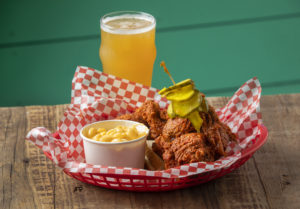with·draw·al (w
-drô
l, w
th-) n. Those side effects experienced by a person who has become physically dependent on a substance, upon decreasing the substance’s dosage or discontinuing its use.
 I blame addiction – and its close if disagreeable cousin, withdrawal – for the awful plate of fish we ate the other night. To be fair, it’s my fault; I know better than to take down $70 worth of raw fish and temperamental garnishes from a place I’ve never been, especially in Sonoma County, where we’re not exactly known for old-school Japanese cuisine (and yes, I’m well acquainted with the brilliant Ken-san at Hana, the proverbial exception that proves the rule). But my wife and I are addicted to the stuff – if there’s a purer expression of food than expertly prepared edomae-style sushi, I don’t know it – and so, like a crack addict too long between fixes, we occasionally make poor judgment calls.
I blame addiction – and its close if disagreeable cousin, withdrawal – for the awful plate of fish we ate the other night. To be fair, it’s my fault; I know better than to take down $70 worth of raw fish and temperamental garnishes from a place I’ve never been, especially in Sonoma County, where we’re not exactly known for old-school Japanese cuisine (and yes, I’m well acquainted with the brilliant Ken-san at Hana, the proverbial exception that proves the rule). But my wife and I are addicted to the stuff – if there’s a purer expression of food than expertly prepared edomae-style sushi, I don’t know it – and so, like a crack addict too long between fixes, we occasionally make poor judgment calls.
Such was the case on Tuesday, when time was short, the kids were freaking for blood sugar, and neither my spouse nor I had had our raw-fish fix in weeks, at least. So we took a chance, on a well-known and well-reviewed place close to home, and holy crap, did it ever suck. I really hate to say bad things about nice people, and they were indeed very nice, and even seemed to be trying despite the appalling results, so I’m not going to name names. But I would like to share with you some bad omens, the sushi-storm warnings I could and should have heeded, the signposts that I hope will save you a belly full of blech and wallet full of cash.
Handicapping Sushi: 6 Simple Rules
- Complexity of Menu. This should have been my first tip-off, a menu the size of the local yellow pages. A sushi menu should fit on an index card, with the vast majority of offerings changing as “specials”, depending on what just came in. (The same concept applies to their cooked food, but only to a degree – one can get exceptional hot food at a great sushi restaurant, and conversely, but the raw fish must always be the star.)
- Silly Roll Quotient. Sushi is about restraint, and I have a simple rule: If there are more rolls than types of fish, go somewhere else; if those rolls sound like they require a structural engineer to assemble and have silly names, run like hell; and if soft shell crab is offered year round, well, soft shell crab season is measured in weeks, so do the math.
- Gimmick Factor. Great sushi depends on three things, and only three things: perfect fish, perfect rice, and proper execution. If a restaurant feels compelled to serve you in ninja outfits, float your food down a mock stream like It’s a Small World, or refers to itself by any word other than “sushi”, “bar”, or “restaurant”, then it’s going to be problematic. I won’t even comment on the ones that offer foods other than Japanese, or “all you can eat”.
- Date-Stamp. Unless you already know and trust the chef, always check when the fish came in. If they tell you “all the time”, they’re lying; if it’s a Monday, get a pizza; and even if it is a delivery day, if they won’t clearly delineate what just came in, and what didn’t, you’re in the wrong place.
- Size Matters. A piece of sushi is meant to be eaten in a single bite; all these huge slabs of fish atop mountains of rice were invented for American gluttons and are irredeemably disgusting. It’s simple: it’s OK, if a bit gauche, to bite it in two if that’s what floats your boat, but never sushi that won’t easily fit in your mouth.
- Rice Matters. No matter how good the fish is, if the rice is substandard, the meal will fail. I’m obviously not going to say that the health risks are of the same order of magnitude, but as a benchmark for a good sushi restaurant, rice is the simplest and cheapest test, in part because a true sushi chef must master rice before they’re allowed anywhere near a knife. Sushi rice should be mildly tacky, but not overly sticky; nicely seasoned and slightly sweet, but not overpowering; the grains should be fully cooked through easy to bite through, but with a coherent outer edge and a distinct border between them; and must never be cold (the finest is every so slightly warmer than the fish).











